A Sunday Conversation with the Resilient Herbert Krabel
Over the past two decades Herbert Krabel has been one of the most consistent personalities in the Slowtwitch community. After racing as a professional mountain biker, Krabel went on to serve as American Bicycle Group’s marketing director and later as Editor-in-Chief for this publication and still contributes from time to time. More often in recent years, the German native based out of Winston-Salem, North Carolina can be found training and racing on trails in both SwimRun and Ultra events.
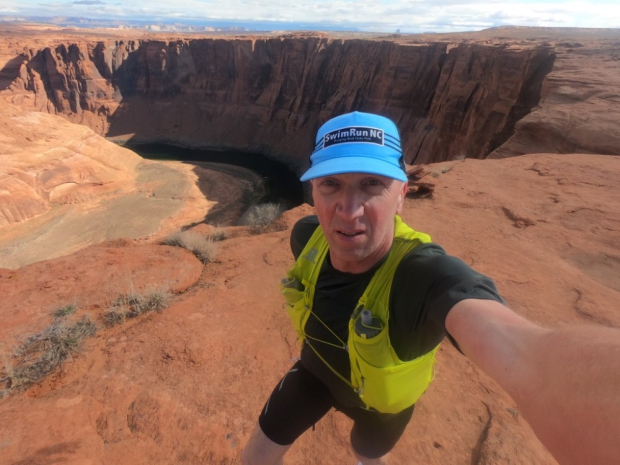
Slowtwitch: You are typically the one asking personalities in our sport the questions. Now the tables are turned. Can you tell us which people or interviews you’ve conducted over the years stick out in your mind as being your favorites?
Herbert Krabel: That is a very tough question as there are many interesting folks out there and it is much easier to remember more recent events. I for one enjoyed chatting with Lazarus Lake of Barkley Marathon fame recently. He is an amazing and funny person and the unique and tough challenges he has imagined and put into place are unparalleled. Among the pros I have interviewed I most enjoyed chatting with Sebastian Kienle. He is an exceptionally gifted athlete and always makes for a great interview, and he grew up not too far from where I was raised in Germany. Interviewing age groupers is also something I enjoy as most Slowtwitch Readers can likely relate to them the best.
ST: You are fresh off another recent ultra run challenge, the Quarantine Backyard Ultra. How did that go?
Herbert: I signed up relatively late for this Lazarus Lake inspired event and had hoped to go at least 24 hours. Basically the format is that you go 4.17 miles (or 6.70 km) every hour on top of the hour and it goes as long as it takes until only one person is left. The winner will likely go 60 plus hours. I had no such ambitions, but I think my goal of 24 hours plus was also way too ambitious. I paced myself well early on and I alternated from running outside to running indoors on Zwift, but when I ran the 10th loop during the 10th hour it was clear to me that I would have to aim for a different goal. Things quickly became unhinged after and during the 13th hour I knew I was done. I managed to finish that loop but was fully cooked and called it a day. I ended up running 54.72 miles and I am content with that number. As to what went wrong I am really not sure.
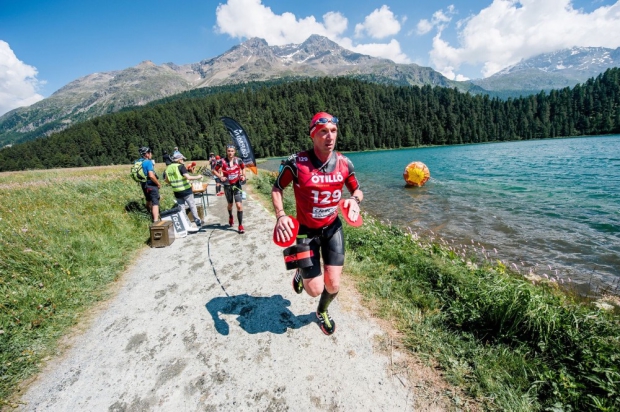
ST: Do you recall a specific moment you shifted your focus towards pursuing endurance challenges? For example, what caused your interest in ÖTILLÖ Engadin?
Herbert: I wrote a lot about different unique events and the one race that had always captivated me was the Norseman Xtreme Triathlon. I attempted multiple times to go and take part, but for various reasons could not work it out and I am still sad about that. The Inferno Triathlon in Switzerland was another race I have always been interested in, but needing to have both a road bike and a mountain bike to do that event made it logistically difficult coming from far away. I had also followed the sport of SwimRun with great interest and in 2016 managed to work it out to race the ÖTILLÖ Swimrun Engadin in Switzerland. Everything from the stunning and challenging location to the passionate race organization captured my heart. It is now my favorite sport even though most folks would think that as a former professional mountain biker I would embrace a sport that features a bike in it.
ST: Do you still race on bikes?
Herbert: I have not raced on any of my bikes in a couple years but had planned to compete in a few gravel races and some shorter triathlons this year. But with COVID19 I’m in the same boat as many others and had to make some adjustments and so the gravel racing will have to wait a bit. But I think some of these smaller races will return sooner than big events that draw folks from everywhere.

ST: You’re a prolific trainer on indoor platforms, especially on Zwift. What do you like most about it? Can you tell us about your pain cave set up at your home?
Herbert: I train indoors because often that is the only way for me to stay in shape. My wife is the main breadwinner in our house and since 2016 I have been a stay-at-home dad for my two sons. Leaving the house simply does not always work. But I can ride or run indoors 45-60 minutes while the kids play, and even longer when they are asleep. I actually loathed riding on the trainer until I had a Wahoo Kickr and Zwift. With Zwift I am fully engaged and it is easy to ride longer. The longest ride I have done on Zwift was just over 100km, which is incidentally also the longest I have run on the treadmill. Luckily we have a Woodway 4Front treadmill at home, an amazing piece of technology. Once you run on one of these it is hard to go to another treadmill. But I have always enjoyed treadmill running as you can completely control the pace, and I think I have become a better runner because of it. I often do a couple interval or progression runs a week, but the rest of the runs are much more mellow.
As for the pain cave, we built our house new from 2015 to 2016 and then planned in that space. It is separately conditioned so I can have it as cool or hot as I want, plus it is sort of detached from the house so I can blast the music pretty loud.
ST: 100km of running on a treadmill?
Herbert: I had been signed up for a 12 hour race in early June called the Black Mountain Monster but that event was pushed to 2021 because of COVID19. I however then decided to run it anyway but all on Zwift and I then called it the Black Treadmill Monster. The longest distance I had previously run on a treadmill was around 25km so I knew it would not be easy. But several folks from the Zwift running community joined me here and there during that long run and that helped for sure. But after 50km I decided instead of pushing for 12 hours I was going to do 100km faster. Typically 100km is a solid target for folks running 12 hours on a technical course and I wanted to see how much I could get under that time. In the end I managed to hit 100km after 9:38 and change.
ST: What does a typical week of training look like for you?
Herbert: I have been averaging 15-20 hours a week recently with some weeks as much as 25 hours, but what it looks like really varies. So far this year I have run over 2000 miles and biked well over 3000. I have had weeks when I ran well more than 100 miles, and weeks where I rode over 250 miles. My swimming has taken a hit due to COVID19 but I think I will get about 160,000 yards this year. Right now I can only swim two times a week in a 45 minute window each time.

ST: You recently completed the Great Virtual Race Across Tennessee 1000km. What was this experience like? How did your fitness progress throughout the 37 days it took you to complete the challenge?
Herbert: These types of challenges are very interesting but in a normal season I would not have signed up. I had many other events planned but with them all falling away I kind of leaned into this one. It was obvious to me that I could easily run the 1024 km in the four month window, but really wanted to support Lazarus Lake and what he stands for. I became obsessed with the competition aspect and pushed pretty hard. It really did not change my fitness much but it pushed my weekly mileage up.
ST: One of your big goals before the pandemic was to race at the Boston Marathon. Can you tell us about your road to qualifying and if this is still in your plans?
Herbert: I actually never had the goal to race in Boston but was inspired by Des Linden when she won the race in 2018 in miserable conditions. I set out to qualify and raced a tough marathon near Asheville in early June of 2018 to get the qualification, but I tore my meniscus and was out for most of that summer. After surgery I slowly built back up by mostly running on trails and on the treadmill and qualified at the Tunnel Marathon near Seattle, Washington with a time of 3:17:24. As a 55 year old male I needed 3:35 to qualify so I ran a smart race with a 1:43 first half and a 1:34 second half. I think treadmill running has helped me with structuring and practicing progressive runs. I still want to go to Boston but will not chase it endlessly. My plan had been for Boston to be my last longer race on pavement, and then fully focus on trail racing and SwimRun.
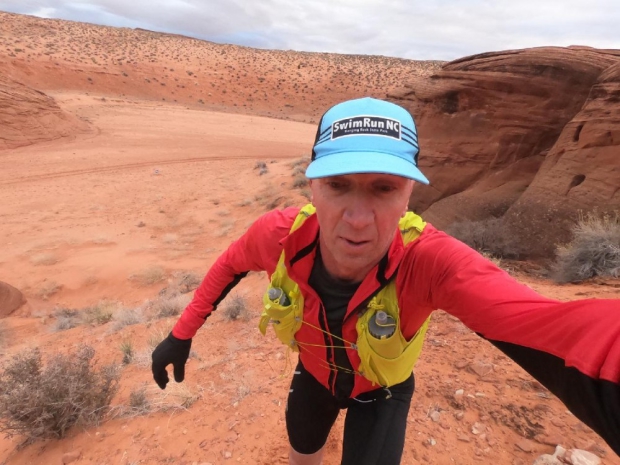
ST: This year you’ve seemingly turned your attention to taking on ultra running challenges, each one quite different from the other. What made you decide to do Antelope Canyon?
Herbert: My goal has been to qualify for the CCC race by UTMB. It is a 100km event around Mont Blanc and a big bucket list race for many ultra runners. The 100 miler at UTMB is what drives most people but I think the 100km event will be plenty difficult and allow me to soak in the stunning alpine views and the unbelievable atmosphere. That is also the reason why I signed up for Antelope Canyon 50 miler as it offers qualifying points for the UTMB events. We ran through a bunch of slot canyons, including Antelope Canyon, and also ran around the famed Horseshoe Bend. I will run a few more events like this once things return to normal.
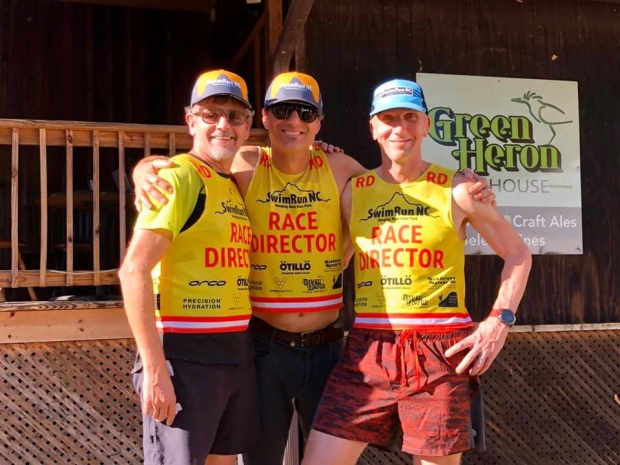
ST: Together with two of your friends you produce SwimRun NC. Can you tell us about that race and what makes it unique?
Herbert: Jan Kriska and Jeff Beckelhimer started the event and I kind of got roped in, but now the three of us run the race fully as volunteers. As the race directors we don’t take money from the event and have been able to buy a variety of things for the park where it takes place. In 2016 we did not have a lot left over, but from the proceeds of that race and the 2017 proceeds we bought the Hanging Rock State Park a mobile firefighting unit. From the 2018 proceeds a couple park ranger bicycles, and we are in the process of paying for the installation of an electric car charging station for the park with the proceeds from the 2019 event. But most of the money goes back to the athletes. We now fly in two ace photographers and a video crew each year and have a lot of swag for our athletes. We also get local elementary schools involved and we have third and fourth graders from two different schools write personal notes to each team. We also have some very cool awards, four places deep, and we pay cash to the top three teams in each division. But I think people mostly appreciate the tough challenge and the beautiful setting where our event takes place, and the care and personal touch.
ST: What is it about SwimRun that you enjoy? Where do you see the sport going in upcoming years?
Herbert: I really like that each race is different and that the event courses are not forced onto the land. When a race has to be 10km or 13.1 miles it is very tricky to find a course that perfectly suits the distance, but in SwimRun the distance itself is not important. It is all about getting from here to there, and the venues are often quite stunning. I also enjoy the team aspect of SwimRun and I have made many new friends because of it. Plus traveling to a SwimRun race is very easy as it really does not take that much gear. When I met my partner Matus Kriska in Zürich to go to ÖTILLÖ Engadin we both ended up traveling in a small European car with all our race gear and baggage and space was never an issue.
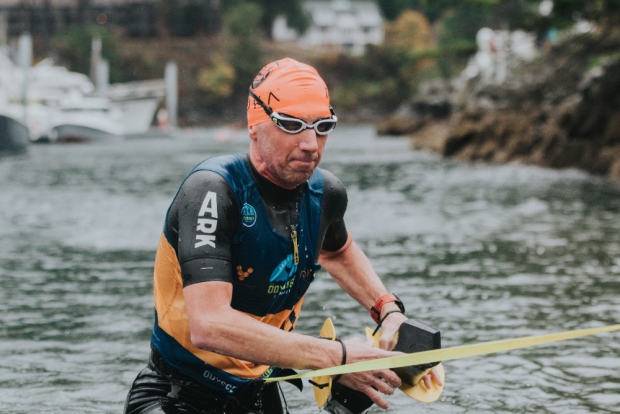
ST: You've got an astute attention to detail and this is evident in bike and gear photo galleries you produce. How do swimrun and running satisfy your gear cravings?
Herbert: With SwimRun I actually like that there is not that much gear to worry about. I have made a simple lasso attachment for my massive ARK Keel buoy, and I put knots on the other side of my Strokemaker paddle straps so they can’t slip back through the holes. In terms of a wetsuit I currently use an ARK Örno SwimRun suit. I really like how thin and flexible it is and that works great for me as I prefer being cold to being too warm. I use Aqua Sphere goggles and run in Salomon shoes.
ST: What is on your horizon for the remainder of 2020? What about in 2021?
Herbert: I have nothing else scheduled and sadly do not see too many events happening the rest of the year. I would also accept not to race a single event in 2021 if in exchange that meant that COVID19 is cured.
You can follow Herbert's endurance pursuits on Instagram at @herbertkrabel.


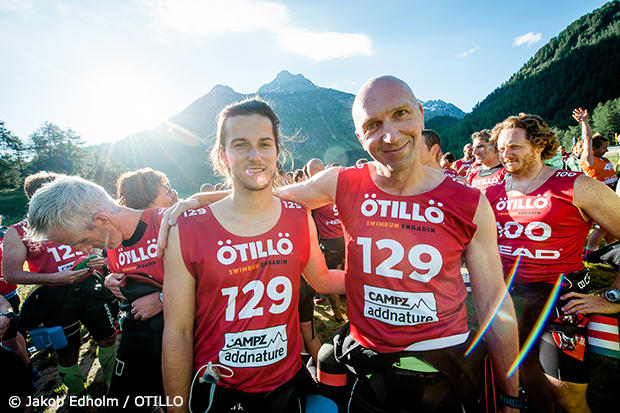
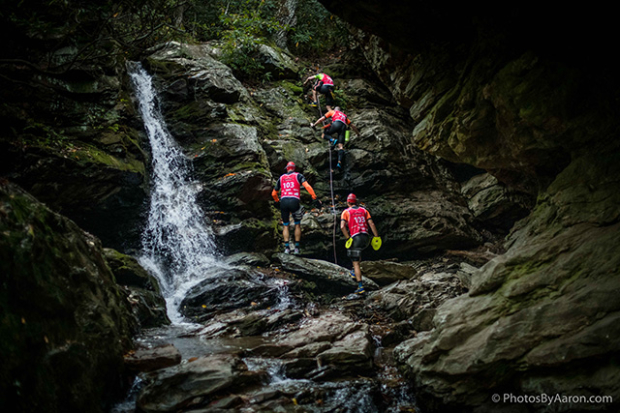
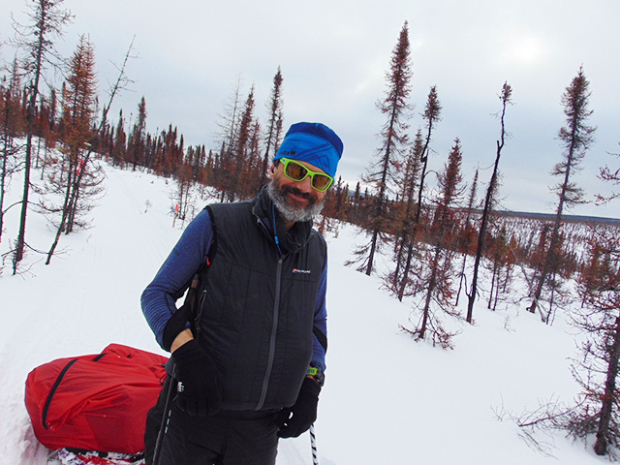
Start the discussion at forum.slowtwitch.com